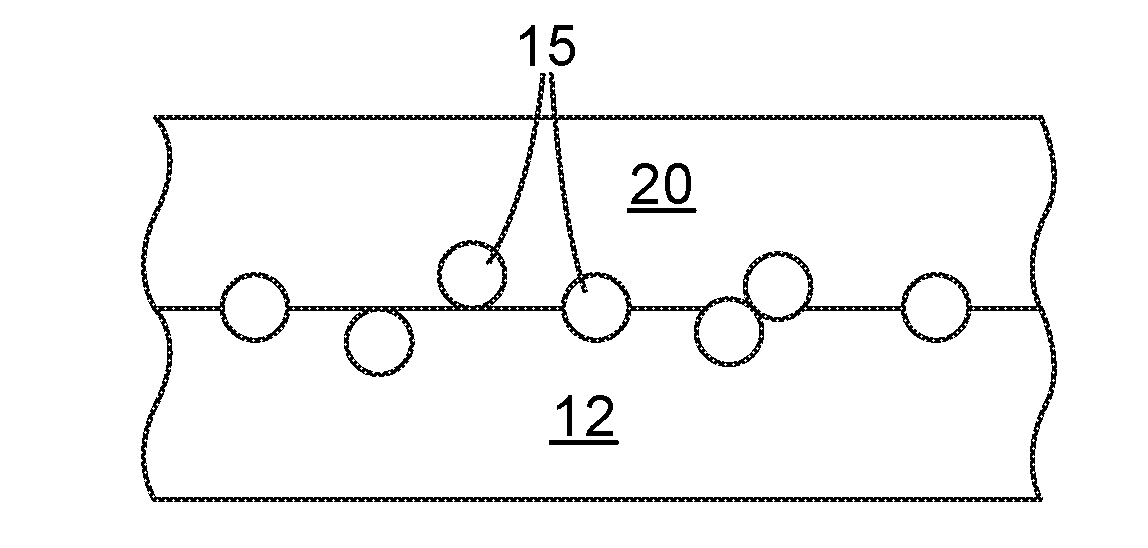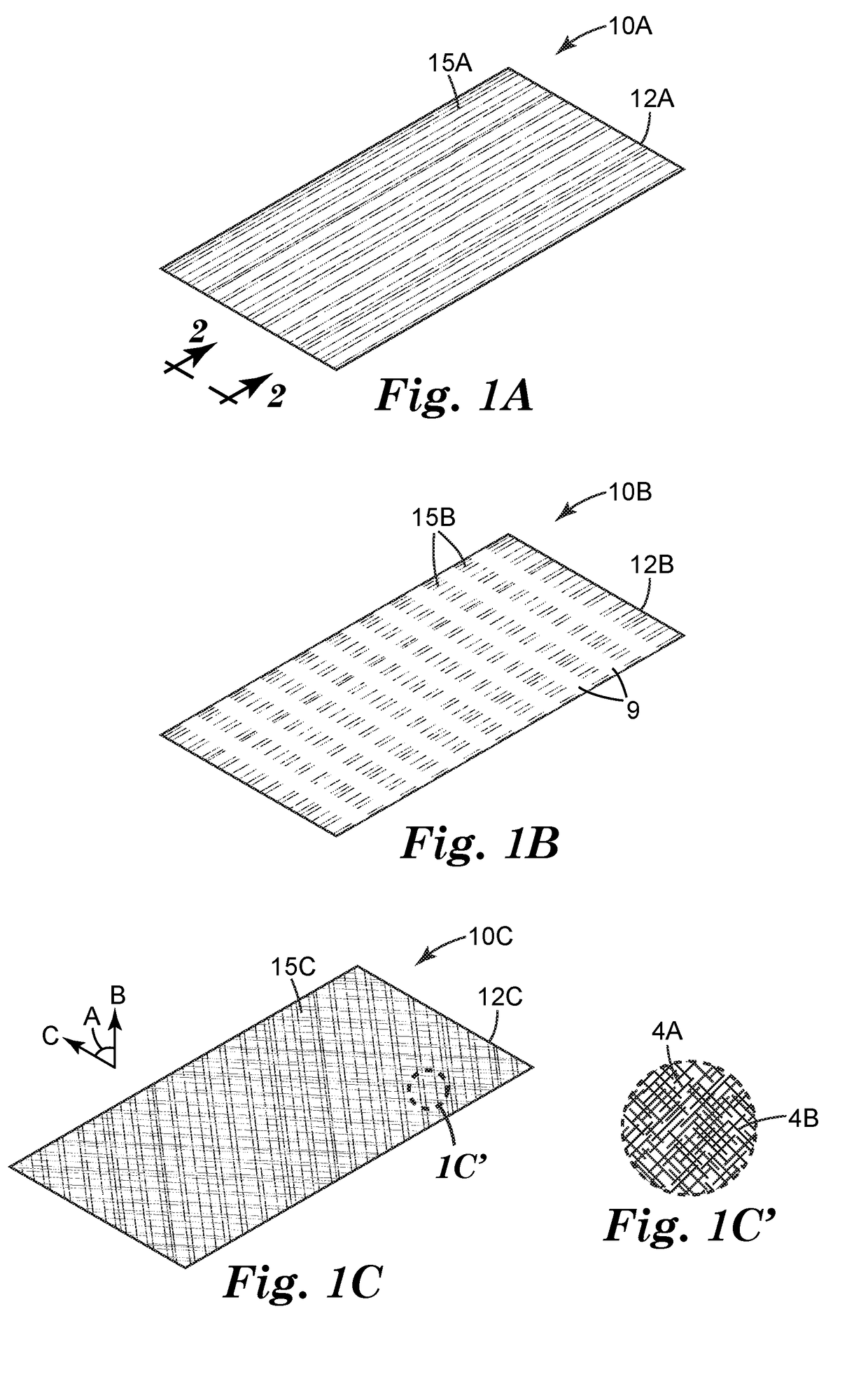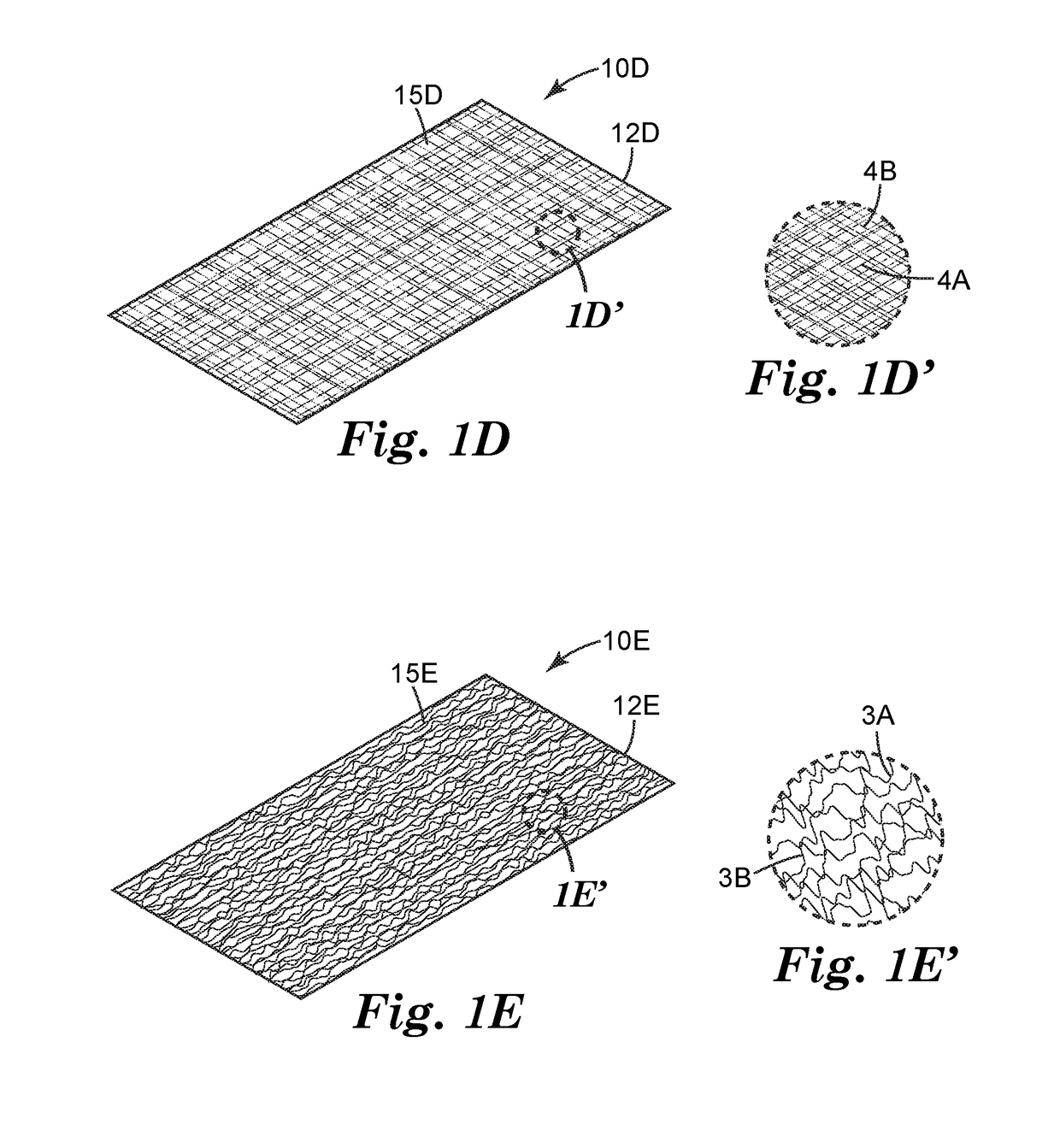Method of making web with partially embedded fibers
- Summary
- Abstract
- Description
- Claims
- Application Information
AI Technical Summary
Benefits of technology
Problems solved by technology
Method used
Image
Examples
example 1
Liner with Partially Embedded Filaments
[0081]Liner L1 with release surface facing up was fed through a heated nip consisting of a rubber roll (Roll 1) on top and a steel roll (Roll 2) on the bottom at 60 feet / minute. The nip pressure was 40 lb. / in. The nip heat exchanger for both rolls was set to set to 240° F. (116° C.), and the exiting liner was estimated to be 206° F. with an infrared thermometer. Resin R1 was heated and extruded at 480° F. (249° C.) in an extruder with a screw diameter of 50 mm and L / D of approximately 32:1 through a 2- in die with 60 orifices per in onto a room temperature steel roll (Roll 3). The drilled die orifices had openings of 0.008 in (0.20 mm). The extrusion rates were measured at an average of 0.14 lb / hr, but varied due to running low extruder rates.
[0082]The resulting extruded filaments were drawn over 5 in. and touched the side of the smooth steel roll (Roll 3) before being nipped with the heated liner on the heated roll (Roll 2), thus pressing the ...
example 2
Film Laminated to Liner with Embedded Filaments
[0084]A section of liner with embedded filaments, a la Example 1, was placed on a hard, flat bench surface with the embedded filaments facing up. A slightly larger section of reflective graphic film F1 was then laminated to the liner: First, a small section of film F1 was aligned with the filament containing liner and manually tacked to the bench. Then, a rubber roller (similar to p / n EDI: 19560, available from Marshalltown Company, Marshalltown, Iowa) was placed on the tacked portion of the film F1 and advanced, thus laminating the film F1 to the Liner with Embedded Filaments.
example 3
Repositionable Adhesive Film with Filaments
[0085]The laminate of Example 2 was separated manually removing the liner L1 used Example 1 from the film F1. As the two films separated, the filaments remained on the adhesive side of the film F1. This formed an adhesive backed film with partially embedded filaments.
[0086]The adhesive backed film with partially embedded filaments was placed adhesive side down onto a surface, without additional pressure—that is, there was no aggressive pressing, such that the filaments prevented the adhesive layer from making intimate contact with the surface. The adhesive backed film with partially embedded filaments was then moved and repositioned by pulling a corner of the film. Once the film was pressed gently, it adhered to the surface. When pressed more firmly more adhesive bonded to the surface, increasing the bond.
[0087]Another sample (this one a 1.5 inch wide strip) of adhesive backed film with partially embedded filaments was adhered to a glass su...
PUM
| Property | Measurement | Unit |
|---|---|---|
| Fraction | aaaaa | aaaaa |
| Fraction | aaaaa | aaaaa |
| Length | aaaaa | aaaaa |
Abstract
Description
Claims
Application Information
 Login to view more
Login to view more - R&D Engineer
- R&D Manager
- IP Professional
- Industry Leading Data Capabilities
- Powerful AI technology
- Patent DNA Extraction
Browse by: Latest US Patents, China's latest patents, Technical Efficacy Thesaurus, Application Domain, Technology Topic.
© 2024 PatSnap. All rights reserved.Legal|Privacy policy|Modern Slavery Act Transparency Statement|Sitemap



